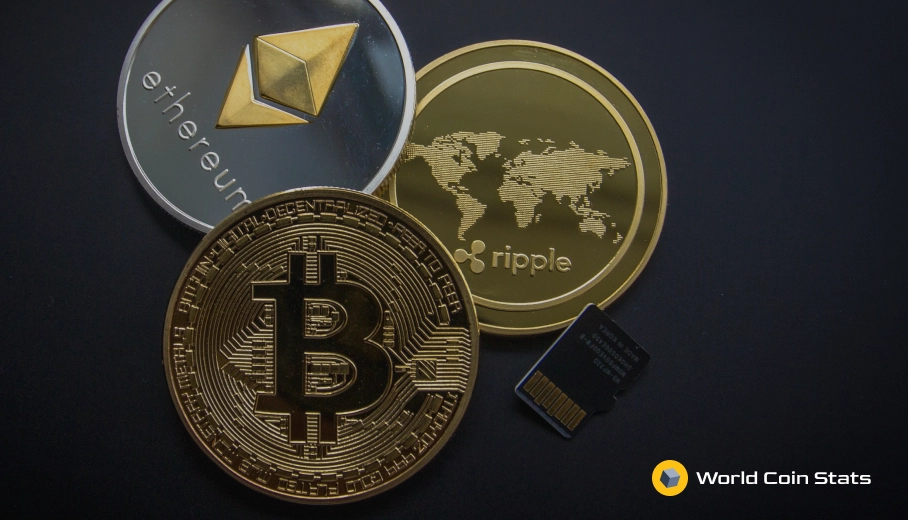How Does Liquidity In The Cryptocurrency Market Work?
Liquidity is one of those words you probably hear thrown around quite a lot in the cryptocurrency industry. However, what you don’t often see mentioned is exactly how liquidity in the cryptocurrency marketplace works.
It’s not too complicated to understand and generally follows the same principles of a normal market. With that said, this article will offer an in-depth explanation about liquidity in the cryptocurrency market.
What Exactly is Liquidity?
First thing first, an explanation on the definition of liquidity is in order. Basically, you can think of liquidity as the ease with which a holder of an asset can convert that asset into cash without impacting the price of the market.
A highly liquid market will have a large volume of buyers and sellers, and the market will stay relatively flat if a holder decides to sell their shares. Gold and Amazon stock are considered highly liquid assets because holders can easily sell their shares without having to take a price discount.
On the flipside, an illiquid (low liquidity) market does not have many buyers or sellers – the trading volume is low. This means that it can be difficult to purchase the asset and selling it can prove difficult simply because not many buyers are out there.
Some examples of illiquid assets include most penny stocks, scamcoins, and real estate in an undesirable location.
It’s considered a bad thing to own an illiquid asset because converting that asset to cash will prove difficult unless the seller discounts their asset.
How Liquidity in Cryptocurrency is Measured
Measuring the liquidity of a cryptocurrency is actually really easy. Now, there is no exact formula to this and the liquidity can vary depending on the exchange.
We recommend that you measure the liquidity on a particular exchange rather than the market as a whole because exchanges have differing levels of liquidity. And those differences in liquidity can be quite significant outside of Bitcoin, Ethereum, and some other major cryptocurrency.
So, you measure liquidity in cryptocurrency by looking at two things:
- 24 hour trading volume
- The bid/ask spread
The bigger the 24 hour trading volume; the more liquid the market. Remember, the difference between high liquidity and low liquidity is not an objective thing. But we like to use the following ranges to define liquidity:
- Super Liquid: Over $1 billion 24 hour trading volume.
- Highly Liquid: Over $100 million 24 hour trading volume.
- Medium Liquidity: $50 million to $100 million 24 hour trading volume.
- Lower Liquidity: $10 million to $50 million 24 hour trading volume.
- Low Liquidity: $1 million to $10 million 24 hour trading volume.
- Illiquid: Under $1 million 24 hour trading volume.
That list is a rough estimate of definitions. You generally want to avoid investing in cryptocurrencies that trade less than $50 million worth in 24 hours unless you know what you’re doing in cryptocurrency.
Moving on, we can also measure liquidity by looking at the spread between the lowest ask price and the highest bid price. This is a little more complicated because the difference in the spread can vary depending on the price of the cryptocurrency.
We like to say a difference of a few cents no matter the price of the cryptocurrency. The bid/ask spread on Coinbase Pro for Bitcoin at the time of writing is $0.01 despite Bitcoin costing nearly $50,000.
For this, just use common sense. If the price of the cryptocurrency is $100 and the bid/ask spread is $30, then you are likely dealing with an illiquid cryptocurrency. You will certainly struggle to sell it at a decent price with a 30% bid/ask spread.
Where Does Liquidity in Cryptocurrency Come From?
Liquidity comes from people buying and selling the underlying asset. In the case of Bitcoin, as Bitcoin becomes more popular; its liquidity will increase.
Things can get a little more complicated with cryptocurrency because exchanges do not actually have all that much cryptocurrency on hand because they only need to pay the cryptocurrency when someone withdraws it from their account.
It’s similar to how a bank operates – the bank does not have access to the total amount of cash in its checking accounts. That would be far too expensive and really not practical because most people don’t want to withdraw all their cash at once.
Cryptocurrency exchanges operate the same way. They have maybe 30% of the total amount “owned” on hand at any given time. But that’s not particularly relevant for the liquidity of the greater cryptocurrency market.
3 Reasons Liquidity is Important in Cryptocurrency
Liquidity is important in cryptocurrency for a variety of reasons. These reasons impact everyone from crypto day traders to someone that simply wants to hold some cryptocurrency in case the market goes up.
Here are 5 major reasons why liquidity is super important in cryptocurrency.
Stable Price
Unsurprisingly, a very liquid asset will generally have a more stable price. This is because there are generally a similar number of market participants buying and selling the asset.
Of course, this is not always the case in cryptocurrency, but it’s undeniable that the price of cryptocurrency has become more stable as the popularity of it has increased over the years.
A more stable price might not excite those that have plans of making billions with cryptocurrency, but it does make the asset far more appealing to the general public if the price does not jump 10,000% one day and fall 80% the next day.
Faster Trades
Faster trades in a liquid market is a benefit that mostly impacts traders. Those that buy and hold will likely not care too much about trading speed. Though it is nice to see a price and buy it at that price immediately.
Anyway, transitions in a liquid market will close out much faster than those in an illiquid market. This makes perfect sense because, well, there are just more buyers and sellers.
More importantly, the trades will close out at the price on the order form. There is far less slippage in a highly liquid market because, quite frankly, the price does not fluctuate much in a highly liquid market.
It’s Harder to Manipulate a Liquid Asset
Finally, it’s far more difficult to manipulate a liquid asset than an illiquid asset. This is because one “whale” cannot change the price by making a large buy or sell order. Nor can fraudsters pump the price of a liquid asset as easily as they can pump the price of an illiquid asset.
There is a reason that pump and dump stock schemes only occur on penny stocks! It requires way too much capital to change the price of a highly liquid stock like Amazon.
And the same applies to Bitcoin and Ethereum in the cryptocurrency industry. You will notice that fraudsters stick to pumping their own projects or small projects that do not have much liquidity.
Again, this is because they know their mailing list of 5,000 people will have little to no impact on the price of Bitcoin ($14 billion daily volume). They stick to the projects with a trading volume under $1 million or so.
The Risks of Low Liquidity Cryptocurrencies
There are a few risks of trading or investing in low liquidity cryptocurrencies. Due to those risks, most professional traders and cryptocurrency experts avoid cryptocurrencies that have low liquidity.
The risks include the following:
- Easier to manipulate low liquidity cryptocurrencies.
The biggest risk of low liquidity cryptocurrencies is that bad actors can manipulate the price without too much difficulty. This is often done by so-called cryptocurrency experts on YouTube or Twitter calling for their followers to invest in an obscure cryptocurrency with a low trading volume.
Of course, the influencer already owns the cryptocurrency and knows the price will increase once they instruct their audience to buy it.
Influencers like that use their followers for exit liquidity.
- Selling is difficult
The other reason to avoid low liquidity cryptocurrencies is that you will struggle to sell the cryptocurrency at a reasonable price.
There is not much demand for an illiquid cryptocurrency, so a sell order will fill all the demand rather quickly. At that point, the seller must drop the price to sell the rest of the cryptocurrency or hold for a long time.
- Low liquidity cryptocurrencies are often scams
Finally, low liquidity cryptocurrencies have a tendency to be scams. Now, we aren’t saying that all cryptocurrencies with a 24 hour trading volume under $10 million are scams.
There are plenty of legitimate cryptocurrencies that simply have not yet caught on and still have a low trading volume. But pretty much every scam cryptocurrency will have very low liquidity, which becomes more apparent when the initial pump phase has passed.
Closing Thoughts
That covers it for how liquidity in the cryptocurrency market works. It’s simply a measure of how much money is spent trading cryptocurrency every single day.
The impacts of liquidity are quite large, though. In fact, we would say that liquidity is the most important factor of any market as it indicates the popularity of the market and marks the ability to enter and exit a particular position.




